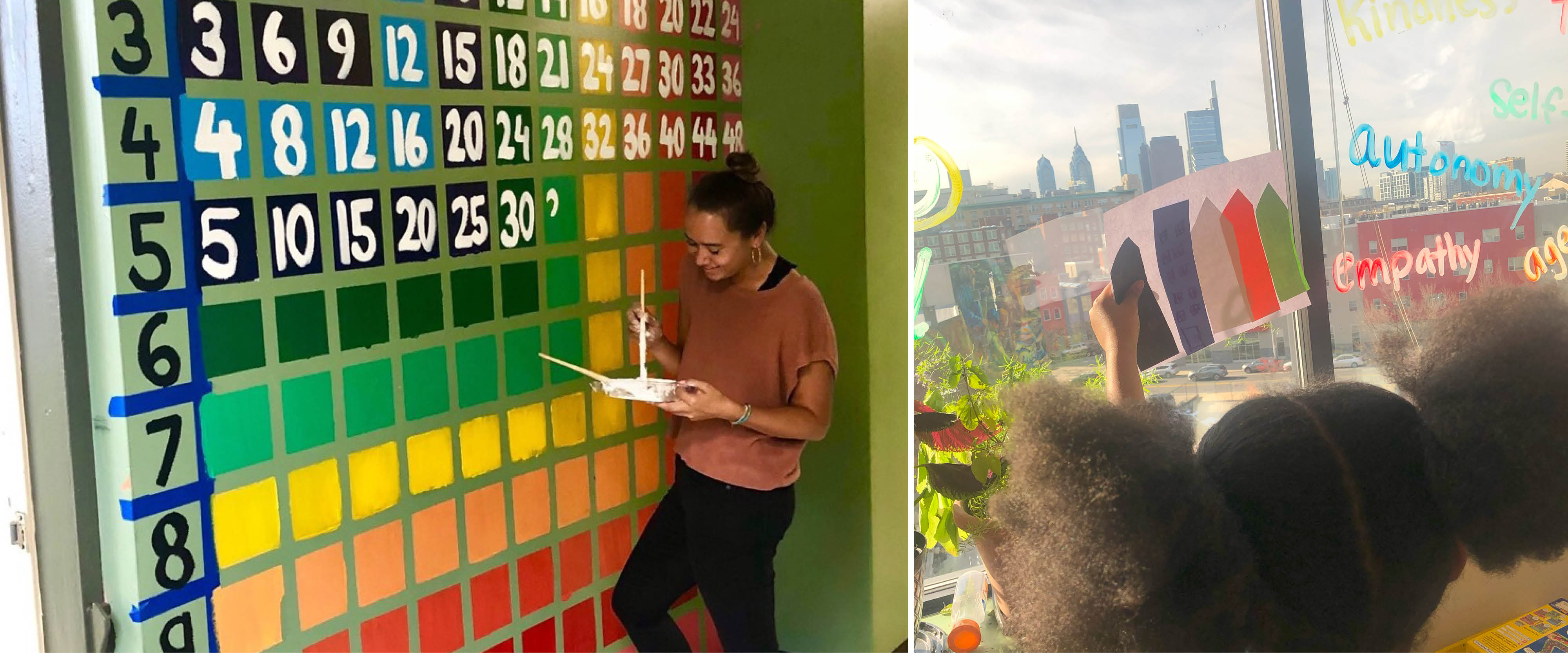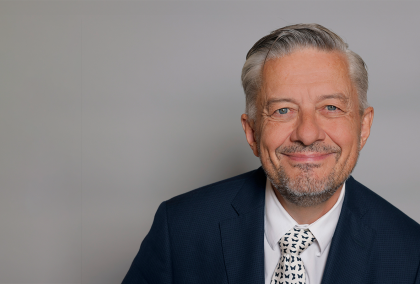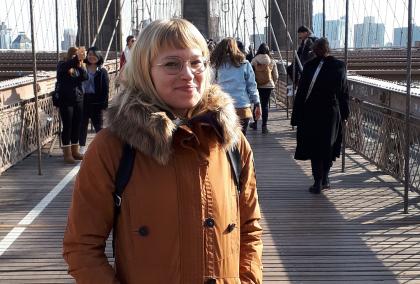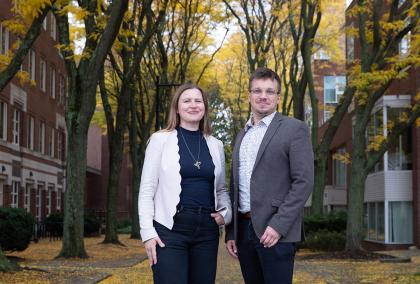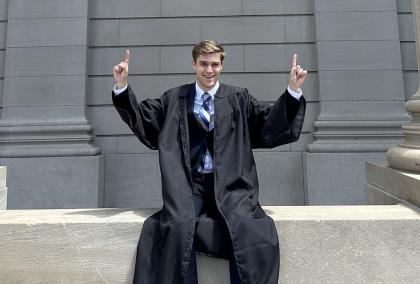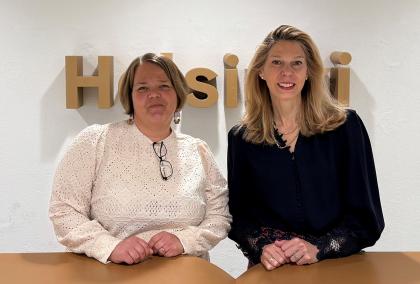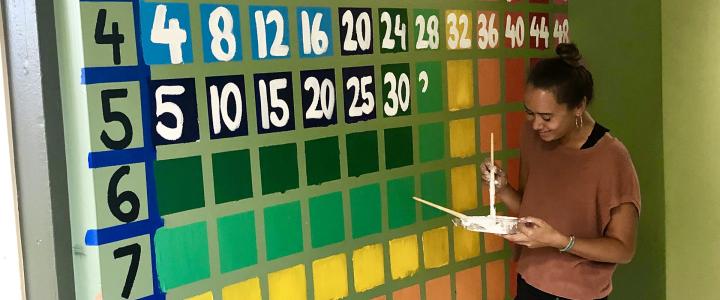

Introduction
Situated in a North Philadelphia classroom with no windows, I did my best to give my kindergarten and first-grade students a safe and nurturing environment in an urban system that did not allocate time for recess. My Kindergarten students were 5-6 years old and many of them were emotionally dysregulated, engaging in physical and emotional disputes, and releasing pent-up frustration within the walls of our classroom.
I was determined to create an environment for my students to feel safe, comforted, and cared for in our classroom “home,” where their space would foster feelings of trust and belongingness.
My first step was to identify what my students find meaning in based on age and interest. I followed the students’ lead and began incorporating art, music, and play into the classroom throughout the curriculum, providing my students with kinesthetic outlets that support their developing social skills, and keeping emphasis on the high priority needs of an under-resourced school that stressed standardized test scores. Not before long, my students were demonstrating positive changes in pro-social skills and an increased focus toward academic content.
I was impressed and curious. How could I do more to support child outcomes with Playful Learning?
I researched best practices of other pedagogical play-oriented models and discovered the world’s best: Finnish Playful Learning. Finland’s early childhood education is emphasized by learning developmental and academic skills through play and view play as an integral part of a child’s cognitive, social, emotional, and motor development. Before long, I applied for a year-long Fulbright Student Research Grant with a mission to explore Finland’s early education policies and best practices to create my own Playful Learning classroom-based program that afforded students the opportunity to learn through play.
U.S. Urban School Disparities
Juxtaposed to the Finnish Education system, poor performing urban schools are one of America’s most vexing and persistent problems.
The playing field for funding and other forms of assistance is tilted against urban public schools. Yet, funding is only part of the story, but in most urban regions, the disparities in school achievement between high-funded and lower-funded schools often reflect the same disparities between wealthier and poorer municipalities.
Typically schools that perform at a lower rate are concentrated in older, denser central cities, such as Philadelphia, while high performance schools are predominantly located in younger, sprawling suburbs. One of the ironies of the American system is that a low-resourced urban school is situated on the edge of one municipality– just blocks from a blue-ribbon suburban school in a neighboring municipality– with no apparent jurisdictional boundary nor geographical barrier between them. Schools that struggle academically are almost uniformly associated with large, impoverished districts within some of the country’s largest cities. Economic, social, and racial challenges that deeply afflict urban neighborhoods often spill over into classrooms themselves, such that schools are burdened by the negative issues students bring with them from home and community.
This disparity goes to the heart of how American public education is structured, and how that arrangement adversely affects America’s most vulnerable youth. But closing the funding gap rarely closes the achievement gap. There are too many conditions, both at home and at school, that stymie many students’ ability to flourish in the classroom, both socially and academically. And oftentimes, because school resources are few and far between, this leaves many young students without the tools to think critically and creatively, or problem solve properly through social skills or play. Instead, the time is filled with test prep, teaching to the test, rote memorization techniques, and data pushing to try to increase standardized test scores and close the opportunity gap.
Although moments of play do occur in spurts in the conventional American classroom, playful learning is the foundation of the education system that shapes learners to become well-rounded, prosocial, innovative, and dedicated citizens of Finland.
Finnish educators are changing the pedagogical makeup of how children learn by way of experiential learning and play, putting Finland on the map for not only being the happiest country on earth, but also being one of the only countries that teaches playful learning in every classroom. Finnish students are given full autonomy to choose flexible seating during direct instruction. Inside their student-led classroom, every student practices self-agency and takes ownership of their learning by problem solving through play.
Looking to Finland as an optimal model, I applied to Fulbright Finland with the intention of examining the effective outcomes of Playful Learning for Finnish students, especially those that demonstrated similar needs and circumstances of their counterparts, my Philadelphia students. I planned to use my learnings to craft a program that meets the contextual, social, and emotional needs of my K-2 students back home in the U.S. This pedagogical approach left me wondering, “How can we adapt this model to the American schools that need it most?” This question inspired my journey to bring the Playful Learning model to the Philadelphia forefront.
Looking to Finland: Fulbright Research Grant
Prior to moving to Helsinki for the year, I connected with Dr. Jonna Kangas, who is a research professor at the University of Helsinki. Dr. Kangas and I began developing a research plan for the project: The Effects of Play-Based Learning in Social-emotional Environments in K-2 classrooms around Helsinki, Finland. Dr. Kangas provided expertise on how to examine and measure the observable outcomes of teaching through play for young Finnish students. The following tasks were undertaken as part of the proposed research:
(1) Conduct research from Playful Learning Center in Helsinki by way of informal assessment to measure the positive correlation and effects play has on overall social and emotional development in young students;
(2) Use this data to identify ways in which play betters a child’s focus in the classroom, demonstrating that the implementation of social play can benefit a child’s cognitive development, leading them to be more successful and less stressed in a play-based learning environment;
(3) Apply conducted research by creating a program modeled off of the play-based Finnish pedagogical structures to bring back to my urban school setting by implementing a customized program at People for People Charter School for K-2 students. In turn, shifting the academic vision of our K-2 students to have a higher focus on unstructured play opportunities to fill the gap of social-emotional and cognitive development in a socially stressful, low-income environment.
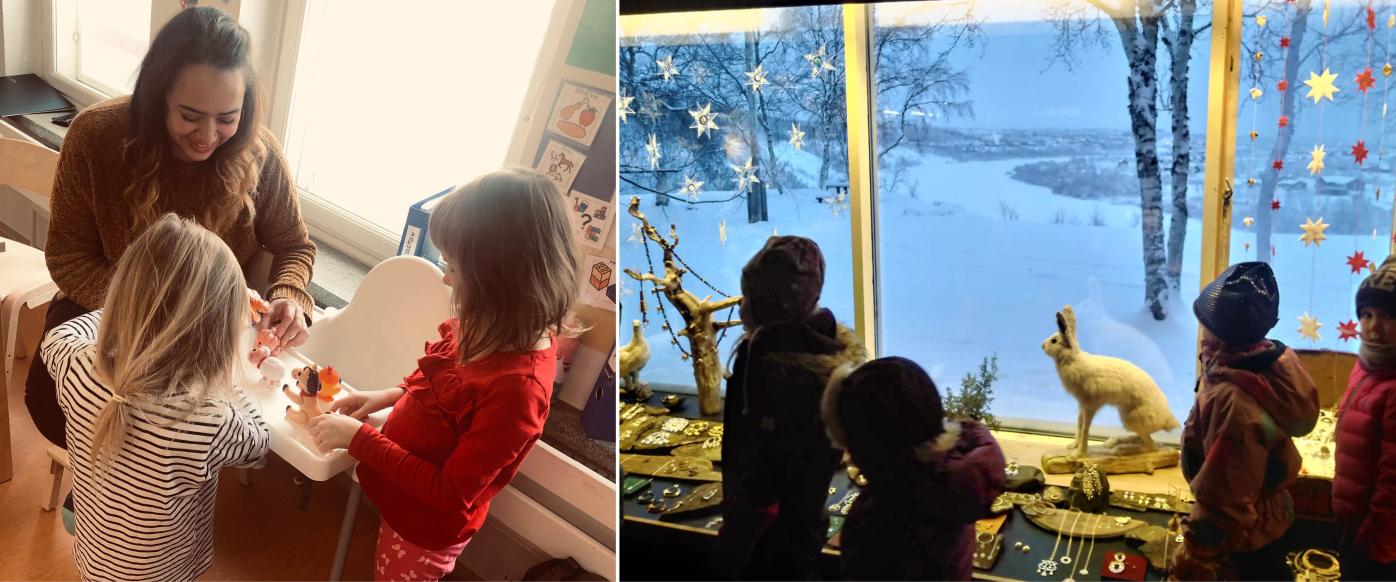
The Playful Learning Center
I began observing under Jonna’s guidance at The Playful Learning Center (PLC), located in the Minerva Building at the University of Helsinki.
This room was designed to create a child-focused and fantasy-like environment that would help spark imagination and instinctive playful learning opportunities for the early childhood students who engage in the space. This particular space was used for the educational researchers and professors at the University to observe teachers in the Helsinki community who schedule time in the PLC to lead lessons and have child-led playful learning moments in the space.
The research that is conducted in the PLC is used to modify and improve the Finnish Early Childhood Education system (ECE) to help guide the National Core Curriculum and the Early Childhood Education Act. The ECE system in Finland is driven and trusted by the researchers who are constantly discovering new and improved ways of implementing playful learning in early childhood schools across the country.
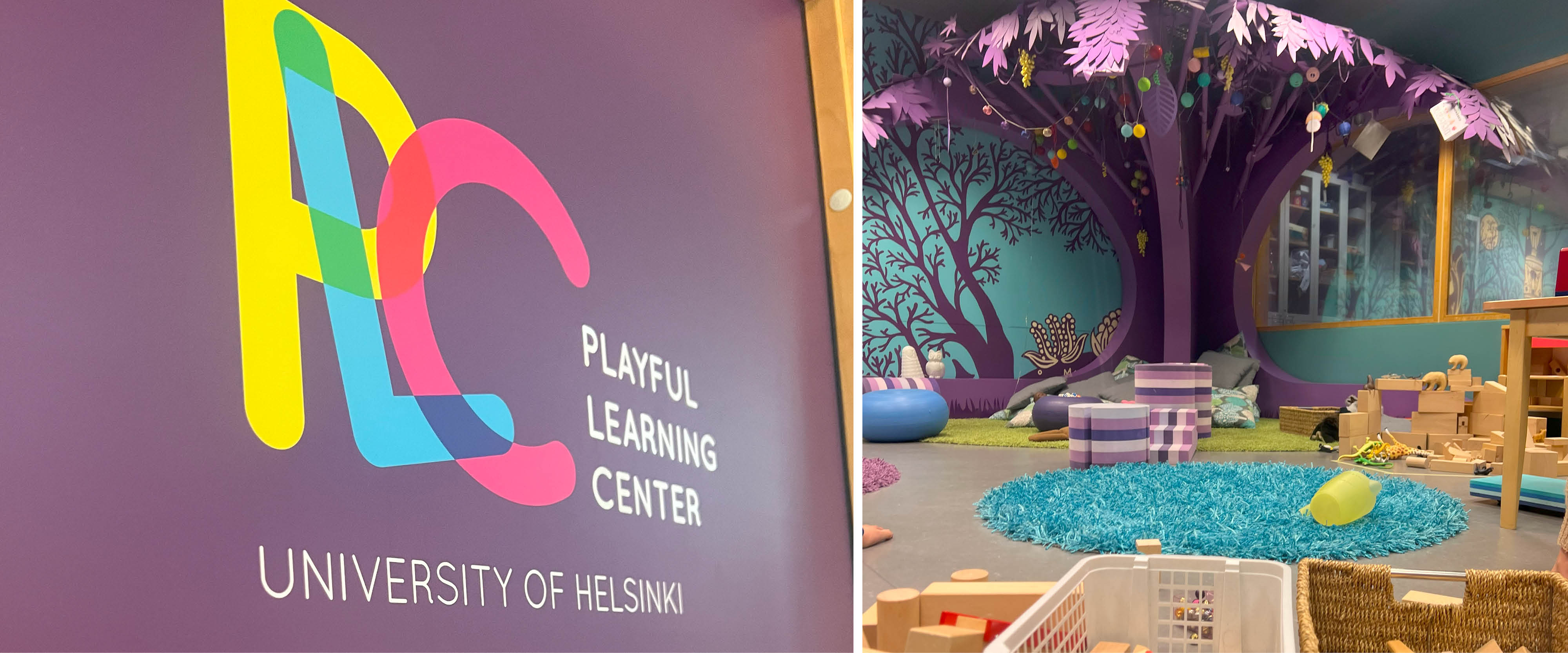
Through hours of observing with Jonna, and watching educators interact in the space with their students, I noticed that students were able to focus for longer periods of time, collaborate and problem solve with their peers, and use self-agency to lead their learning within their environment. Because the PLC is bright, vibrant, imaginative, and full of play resources (including a giant purple tree in a cozy corner of the room) it is easy to watch the students engage in play with their peers in what I would consider, a trauma-informed space. The teachers act as a guide to their students’ learning by encouraging students to interact with both their peers and the environment in fun and engaging ways.
In the PLC, students were rarely disregulated, and if there was a conflict in their environment, they were able to use their own autonomous skills and problem solve the conflict with their peers.
The Finnish Classroom Experience
When I first stepped foot into a Finnish classroom, my educational worldview changed forever.
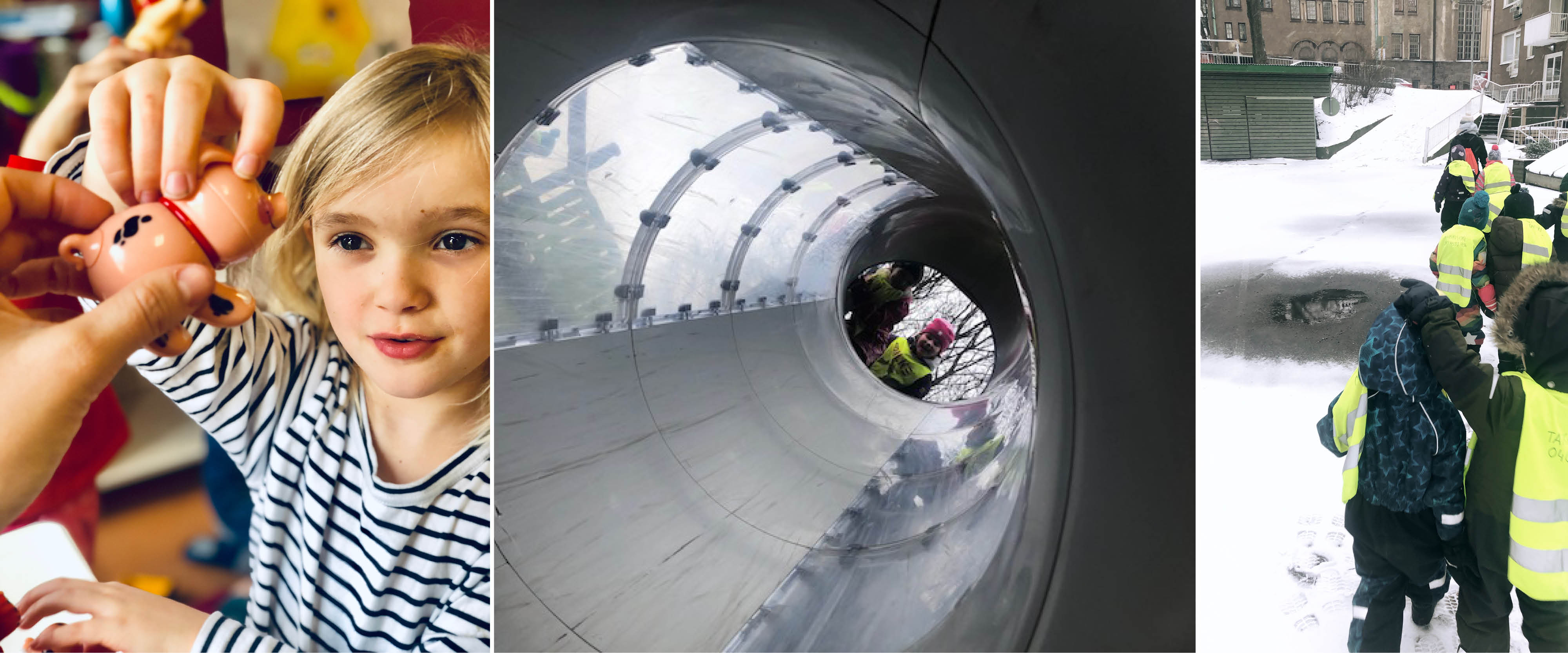
I was astounded by the prominence of playful learning within the Finnish curriculum, especially among PreK to second-grade students.
The teachers in Finland all stand on a united front that bringing Playful Learning opportunities to students in the classroom provides positive educational and developmental benefits that will prepare students to excel in the workplace and in society. Watching the children interact, it became abundantly clear that children learn best when their learning is engaging, meaningful, socially interactive, and most of all, fun. I was inspired to observe children who experience the joys of learning in such a non-traditional, and less didactic way.
My time at the PLC and in Finnish Kindergartens helped create a catalyst for students to engage in playful learning opportunities within the space. The PLC inspired me to design a space that modeled after the features of the Playful Learning Center, to give my former students in Philadelphia a space for them to explore and thrive in an environment that makes them feel safe. Ultimately, my general objective for my work in the PLC was to apply what I learned from teachers and students at the PLC and demonstrate verifiable improvement in the cognitive performance and emotional and physical health of K-4 students at People for People Charter School in North Philadelphia.
Heading into the schools in Helsinki, I began to look at metrics involving cognitive advancement, emotional and social growth, as well as physical health and other markers that the Finnish students exhibited from having playful learning in not only their classroom environment, but in their curriculum as well. While there are limitations to fully replicate the PLC, I had high hopes to be able to slowly move the needle forward within the city of Philadelphia and at my school, to adopt the learnings from these Finnish observations, to prioritize the learning environment and give students more opportunities to interact in their space, as opposed to the didactic, traditional, desk learning that is prominent in the American school system.
As I began reviewing all of the narrative observations, principal and teacher interviews, and data collection on multimodal behaviors in the early childhood classrooms, I discovered that the Finish ECE environment plays an important role in reinforcing children’s early emotional and social skills because it offers the opportunity to engage in positive social interactions with peers and adults.
Additionally, some of the themes that I have found to be universal across the ECE Finnish education system are: autonomy, self-regulation, and trust and love. For example, students are given autonomy to be leaders of their learning and find meaning within their lessons through an exploratory lens, especially in their environment. I have seen autonomy given by the teacher for students to maximize their instruction within their learning space such as: sitting on or under their desks, playing imaginative games with their pairs, or independently exploring their zone of proximal development to challenge their metacognitive abilities and academic boundaries to reach new heights. Self-regulation is encouraged by strengthening the teacher-student autonomous relationship and allowing students to become independent agents in the classroom.
My favorite example of this is a young Finnish student of the age of 4/ 5 years old is held responsible to put on (and take off) all of their outdoor snow gear for their 2-3 outdoor recess and play periods. Self-regulation also helps prepare students to balance their moods and handle their emotions and feelings when there is a conflict. Trust and love - I mention this because the teachers in Philadelphia prioritize behavior management to promote a nurturing relationship with their students. Relationships in Finland between students, teachers, parents, and even educational administrators are based on trust, which I believe is their defining motivation in and out of the classroom.
When you allow children to incorporate things that they love and they find meaning in (meaning-making), they will be more inclined to focus and learn in their environment. All children in these classrooms always feel supported to use their own self agency to yield their own successes. This is because the social emotional environment and the perfected playful learning education system is supportive and provides interactive and engaging opportunities to align with the curriculum.
From Finland to Philly: Just Play
My philosophy of education has derived from my belief that all children deserve a stimulating social-emotional, sensory-oriented, and academic environment where every student can grow physically, mentally, emotionally, and socially in a playfully conducive setting.
This vision was curated from my experiences in Finland to cultivate this type of least restrictive, calming, and playful atmosphere for my former Philadelphia students from kindergarten to third grade to support positive peer to peer social interactions, enhance social skills amongst all early childhood learners, and develop student agency where they are encouraged to learn through play.
Through reviewing my research, I decided to take my findings and the ECE Finnish best practices to create a play program called, Just Play, to implement upon my return. Knowing that Philadelphian students predominantly struggle with social and coping skills. Just Play has been cultivated to spur every student’s imagination and explore new solutions to problems in and out of the classroom.
Just Play has become the conduit that relates these concepts of meaning and engagement to our playfully enriched space, as my students fondly know as our “playspace,” modeled and inspired by the Finnish classroom that incorporates play into their curriculum and learning setting. This enchanting physical space has charted new paths for all children, but especially those affected by trauma, enabling them to flourish through play, en route to conventional learning. Ultimately, my teaching philosophy aims to be a component of playful learning and social-emotional learning.
The biggest uncertainty about creating a program that will model best practices from Helsinki social play programs is that the affluent communities do not directly mirror or correlate to the low-income, trauma inflicted communities in which many of my former K-2 students reside. I knew I needed to adapt and restructure the Helsinki playful learning methods to the needs of the socio-economic circumstances of my students in Philadelphia to better serve their educational requirements. So, I did this by first restructuring the environment for my students, and next by taking the K-2 curriculum standards and infusing playful learning opportunities in the lesson with a specific learning goal.
Just Play: Curating the Classroom Environment & Beyond
Gratefully, with a blank canvas of a 1600 sq. ft room, and a grant that I obtained from my research in Finland, I used the themes I collated from my observations in Finland to create “playful zones” that would help enhance the learning that would occur in this specific social-emotional environment.
Within this grant, I was then given the chance to work with two incredibly talented architects, Allen Pierce, and Bunny Tucker, to co-design and transform an old storage room and make it into a playspace that would provide students with many avenues of social interactions that involve playful learning.
My research has led me to discover the idea of four playful learning zones: (1) active play zone (2) sensory play zone (3) narrative play zone (4) social-emotional play zone.
These zones give students the opportunity to explore their curiosity and apply their skills that they are learning within the playspace environment. By zeroing in on these specific zones that prompt the development of those skills, playful learning settings become an immensely useful companion piece to conventional classrooms for teachers to reach academic attainment and more profound social interaction.
Overall, my philosophy has evolved into the belief that the unconventional, innovative art of a different style of learning, can be just what our young students need to reach their fullest potential; and being their playful selves to their core, can be celebrated.
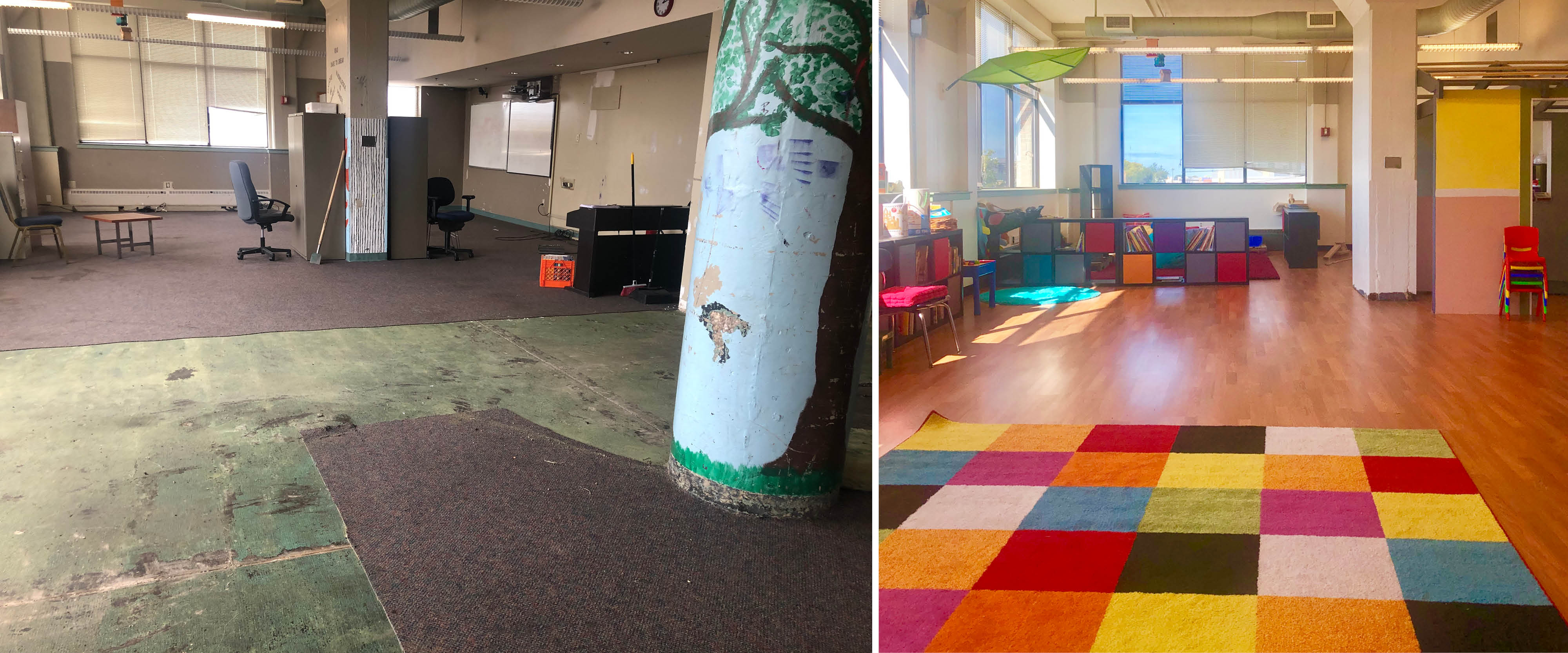
Just Play: Reimagining Hallways
Creating this classroom required alignment between time, efforts, design components, and budget to ensure I got every zone fabricated and furnished by the time school began.
However, once the room was in the stages of being built, I decided to look at another deficit that was extremely prevalent: hallway behavior dynamics. In Finland, sensory and kinesthetic opportunities are plentiful, whereas in Philadelphia, a traditional and conventional way of directing students is often not allowing students to be their most authentic selves, which in K-2, is interacting with peeps, resources, and leaning into their developmental stages of curiosity. I wanted to emphasize to both teachers and students that hallway time could be intentional and does not always need to be so linear (getting from point A to point B).
Because my students in North Philly don’t have a gym or a playground, and certainly lack resources of play materials in the classroom, I came back thinking about their transitions in the hallway to and from lunch and to their new play space. I know that the playspace would have all that they need to feel safe to engage in play, but what about the areas in the school where they are forced to stand straight in line and not talk because that is the traditional way of walking through the halls?
I decided that through my research, the tactile and kinesthetic portion of play is missing while students transition. I wanted to challenge the ways in which our American education system thinks and broaden the idea that students can move around and learn without being forced to be “quiet” and “still.”
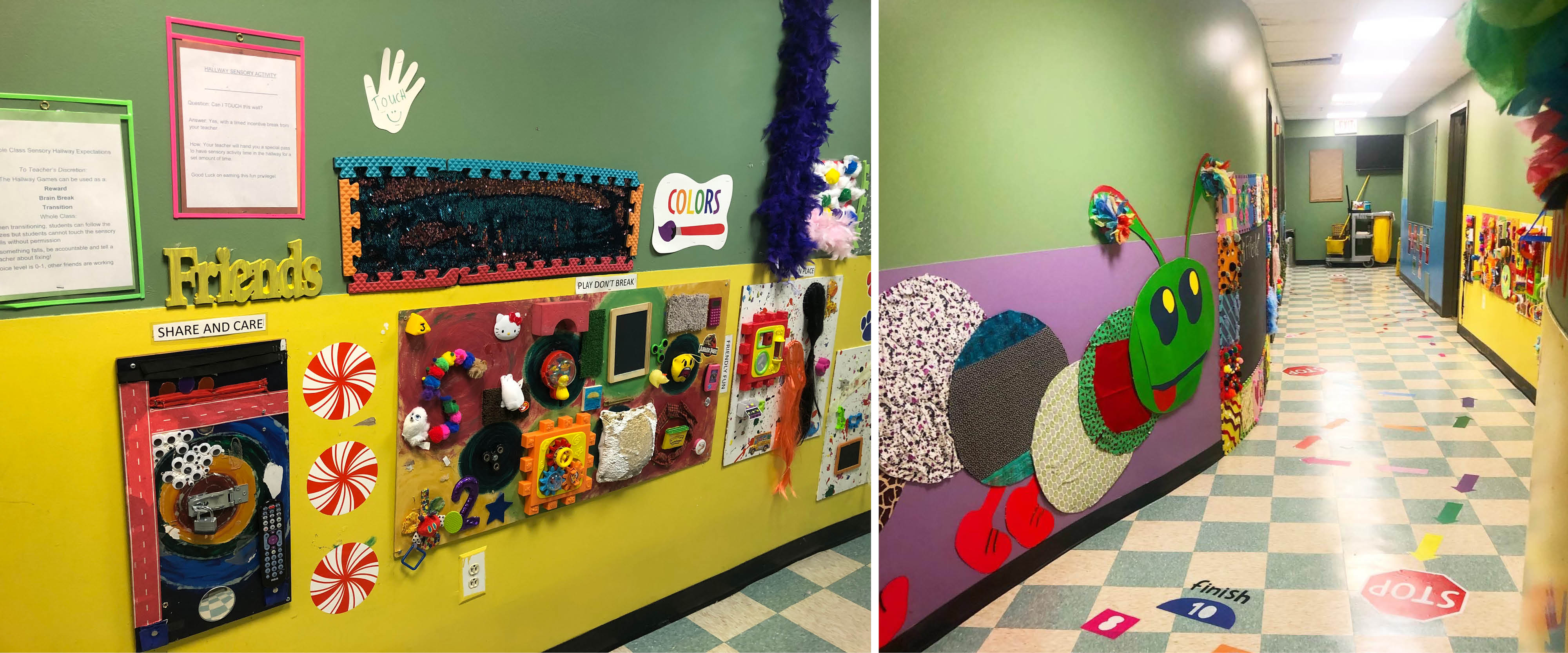
With one of my favorite passions being making art come to life, when thinking about the play environment I was yearning to create at the time, I began to make “sensory boards” where I pasted, hammered, and glued all sorts of sensory-like toys and touchable fabrics to give students something to touch and feel and play with on their way to their destination.
The walls became covered with big boards full of things to push, things that are soft, rough, and things you can move across the board! Students also use this as, what I like to call, a “sensory break,” to help them self-regulate. On the floors, there were floor decals I cut out and created that tell the students through literacy to jump, hopscotch, and follow mazes throughout the hallway as well.
This has caused our early childhood hallway to encourage this type of play and not always feel the need to force students to stay in their lane, but, just like Finland, think outside of the box in their learning environment! Additionally, I began to think about how to create intentional content related experiences for students around the school, outside of their classrooms.
So, I began designing interactive murals and placing them in high-traffic areas that students use to get from one part of the school to the next. I picked standards that were universal across the curriculum, and made the murals reflect that by making it playful and fun: i.e.: multiplication wall, sudoku, I spy wall, periodic table, and even a social skills game wall.
This idea helped trickle down the implication that play and learning can co-exist in a nontraditional way. As a result, adding playful learning to an already existing traditional environment (hallway) helped enhance our K-2 community through better behavioral outcomes while traveling in the hallways, as well as an increase in positive communication with peers and problem solving at each interactive intervention. Quantitatively, tracking their behaviors and problem-solving tactics anecdotally with teachers' help, allowed me to see their progress firsthand, by less incident reports and more mediations that have long-lasting effects on peer-to-peer student relationships.
Data has discovered that teachers and students used this intervention daily and was a catalyst for the playspace and the Just Play program.
The teachers used this intervention when transitioning to and from the classroom and the 5-minute sensory break worked well for individual and paired friends who needed some time to re-center. This encouraged child focus and regulating emotions. Data has discovered that teachers and students used this intervention daily and was a catalyst for the playspace and the Just Play program.
Once the playspace was up and running, the kindergarten, first, and second graders absolutely could not get enough. The space alone provided comfort in ways that my students notoriously did not receive. It was warm, inviting, inclusive, and above all, playful. Teachers liked it because it was not only an environment that their students could go to let out steam, but it was used as an intentional intervention to provide both learning that aligns with their classroom curriculum, (taught by a trained teacher- myself) and gave their students a way to enhance their social skills through learning through play.
Through the Just Play program, students experienced structured play activities where I would give them opportunities to play within four zones (social- emotional, narrative, sensory, and active). While whole group participation is absolutely encouraged, I do think of activities and lessons that are inclusive to all students by understanding their styles of learning. I also modified and accommodated all my lessons by scaffolding cooperative learning groups to ensure all of my students are reaching their own success in groups that reflected their groups in their class.
This was effective because it mirrored a lot of what was already established in their classrooms and was applied similarly in a less restrictive and playful space. Our K-2 students desire the need for movement, dance, and ways to actively play with their classmates. In the playspace environment, I often found ways to help monitor playful learning without necessarily interrupting the play. I would specifically plan activities that they enjoyed (meaning making) or I would come up with a game that focuses on problem solving and inclusivity to encourage critical thinking and teamwork while learning how to story tell for example.
For those that need help self-regulating with peers, giving them the tools of their own, like personal calm-down methods in their least restrictive environment (the playspace,) helping them focus on their emotions, and regroup so that they can go back to being with their peers. And because of play, there has been evidence of success in both behavioral and academic attainment.
There were many success stories and student/teacher narratives that led me to believe I needed to really finish my qualitative research on the efficacious values of this program and the environment to prove that playful learning can and will work in a school environment.
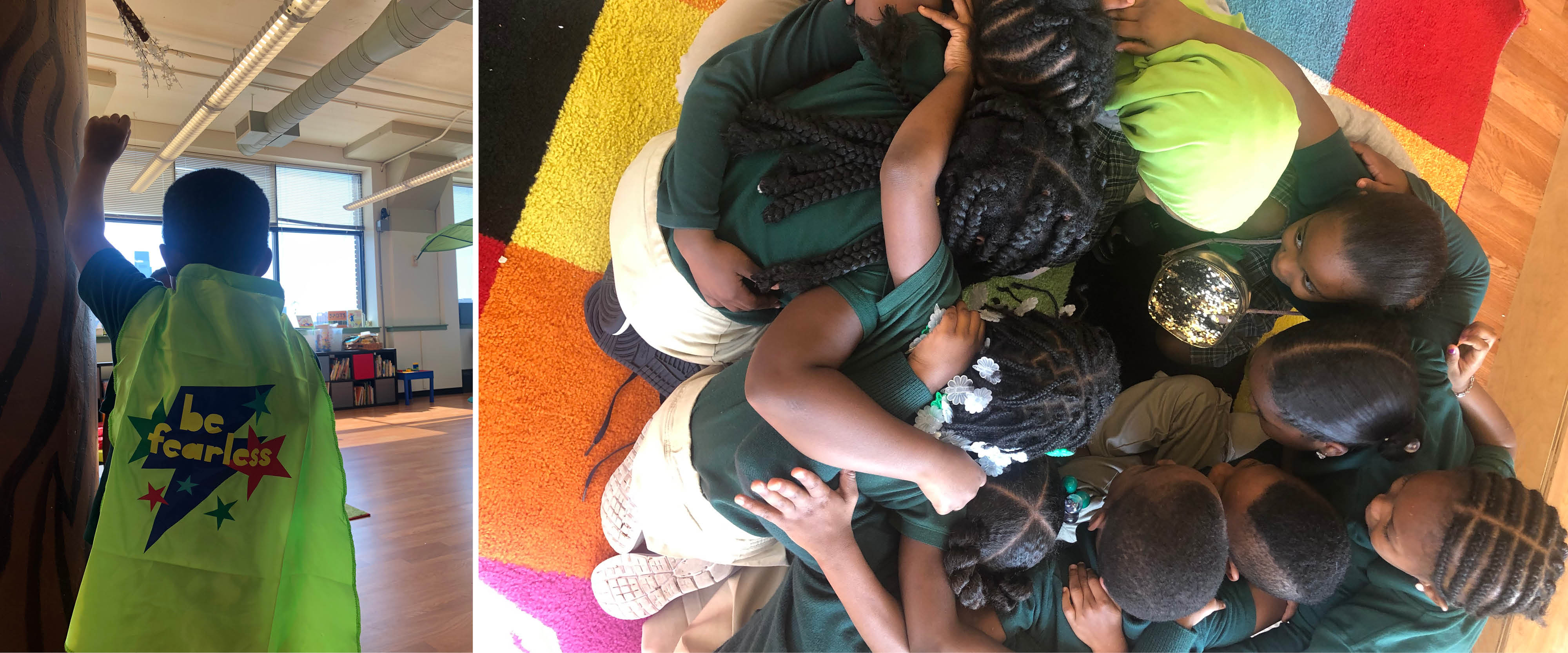
Outcomes of Just Play
Mid school year, I did see improvements in both behavioral and academic, from collating the qualitative data from teacher surveys.
Some of the findings were teacher perceptions of: increased student awareness of physical activity benefits, increased student participation in physical activity, increased student enthusiasm and willingness to be physically active, improved student physical fitness, improved student behavior/focus in the classroom, improved student academic performance, increased teacher and/or administrative support for physical activity, increased community support and involvement, increased communication between peer or to peer.
This was incredibly successful because of both the environment and the way the program was structured to meet the needs of all K-2 students that came to the playspace.
Because I was getting such great feedback on the playspace and program, I was encouraged to apply to a William Penn grant, called, “Play Everywhere,” which was a grant to help increase playful learning into a design form throughout the city of Philadelphia.
I worked diligently with the architects of the playspace to create a robust portfolio of playful learning designs that reflect the Just Play program, classroom, and community in which we serve. The Play District hoped to be the conduit that relates these concepts of meaning and engagement to the community.
This project was set to create a series of enchanting physical spaces and installments that chart new paths for all children, but especially those affected by trauma, enabling them to flourish through play enroute to more accessible playful learning installations within the North Philadelphia community.
Low and behold, we received the grant, and The Play District was born.
The Play District
While this project focused on creating opportunities for teachers, families, and students to play, it also carefully bridged the designed component of an outdoor play space that promoted “productive” play, that invites students to participate in literacy explorations.
The Play District not only promoted kinesthetic movement for students that don’t have the time in their day to engage in that type of playful learning (cooperation, leadership, fairness, etc.), but also maximized a healthy relationship to subject learning that will align with their curriculum. Additionally, this project aimed to be a component of emotional healing for children working through trauma.
The idea behind this project honed in on the importance of playful learning within the Early Childhood and Primary levels of education and how this pedagogy can be properly integrated and potentially replicated throughout Philadelphia. While the Philadelphian School system follows the National Common Core Curriculum that focuses mainly on math and literacy objectives, the Play District aimed to incorporate a myriad of installments that all link back to peer-to-peer interaction, literacy, and kinesthetic and tactile play that led to the enhancement of not only social skills, but academic attainment as well.
Many scholars argue that the implementation of social skills and play within a child’s everyday learning environment (which can exist outside of the classroom walls) allows for better brain development and more positive social-emotional interactions.
The Play District was conceived as a series of interlocked play pathways in between existing but underutilized large play spaces. These paths were formed by a series of small interventions in the public right-of-way.
Unlike a traditional playground that users must travel to and set aside time for, the Play District met users where and when they are. Lost time is unlocked: A student pauses to play at three structures between school and their subway stop. Children and their guardians explore a structure while waiting for the bus. Space is marked: A class uses the route to connect to a larger playground that they once could not via unfriendly sidewalks. The city is opened: A group of children spend the afternoon on a treasure hunt moving from structure to structure in a neighborhood they know well or in one they are just getting to know.
In the design team’s analysis of play opportunities within the defined district, we quickly settled on the idea of using public sidewalks as sites for play structures of various kinds, ranging from surface treatments to assemblies incorporating vertical walls or fences and, where appropriate, overhead canopy conditions.
Each structure was targeted at literacy learning in keeping with the Play Everywhere grant’s mission statement, and each attempted to promote the “6C’s” developed by researchers Kathy Hirsh-Pasek and Roberta Golinkoff and promoted by Playful Learning Landscapes Action Network. These sites connect with the District’s core concept of “play along the way” and ensure that the sites will always be available to the general public. So why not give students around North Philadelphia the chance to broaden their own imagination and brain development through a personalized and intentional ‘safe’ outdoor environment: a pathway of play, in a child’s very own: “Play District?”
Unfortunately, due to unforeseen circumstances, the pandemic and leadership changes in my school led to the dissolution of the pilot as a whole. The Play District was unable to be completed because of the pandemic. But I did walk away with the proof that, with proper implementation, and support from the administration, it is possible to debunk the traditional ideals of a didactic and conventional learning model and instead, adopt a child-centered and playful model that will give every child access to high-quality learning opportunities that look and feel different. And it can exist in the areas where kids and families coexist on a daily basis: the community.
I have always had a burning desire to be an active member of the communities in which I teach and live, which is what makes working with families for me so rewarding. But I knew that this playful learning intervention did not need to start and end with Just Play and the Play District. It can absolutely exist in communities throughout Philadelphia, similar to the grant idea.
Not only is there a play deficit in the classroom, but also, within our neighborhoods. We need to provide playful learning opportunities in places and spaces where families spend time. According to research from Dr. Kathy Hirsh Pasek, while most of the emphasis on closing educational gaps has been placed on schools, little attention has been paid to the 80% of waking hours children spend outside of them. So, I wondered how we could bring play and learning to our city successfully.
Making Philadelphia a Playful Learning City
In Fall of 2021, PLLAN (Playful Learning Landscapes Action Network) hired me to be Philadelphia's neighborhood leader in spearheading playful learning projects (both through design and activity) for children and families.
PLLAN seeks to address learning inequities that exist outside of the classroom and strives to advance and scale evidence-based approaches for creating vibrant public spaces and practical programming that fosters learning and caregiver-child interactions, brings people together, and generates a sense of community ownership and pride. All of these playful learning interactions are the components of what helps support children’s learning and development long term.
Philadelphia’s Playful Learning Landscapes
Infusing our cities with playful learning opportunities can enhance children’s cognitive and social development, better preparing them for success in the 21st-century.
Right now, Philadelphia is leading the work toward becoming a Playful Learning City. Philadelphia in particular, currently has a myriad of inspiring Playful Learning projects that are community-driven and provide caregiver and child interaction. For example, Urban Thinkscape in Philadelphia infused a bus stop with learning by adding puzzles to a bench and transforming the childhood favorite hopscotch game into an executive function activity.
Additionally, PLLAN is working with a number of community-based organizations from across the city, such as Belmont Alliance Civic Association, Puentes de Salud, Indochinese American Council, Mount Airy CDC, and Philadelphia Housing Authority, just to name a few, to create multiple playful learning opportunities in each neighborhood for families with young children to interact with literacy-rich materials and activities promoting adult and child conversation and interaction.
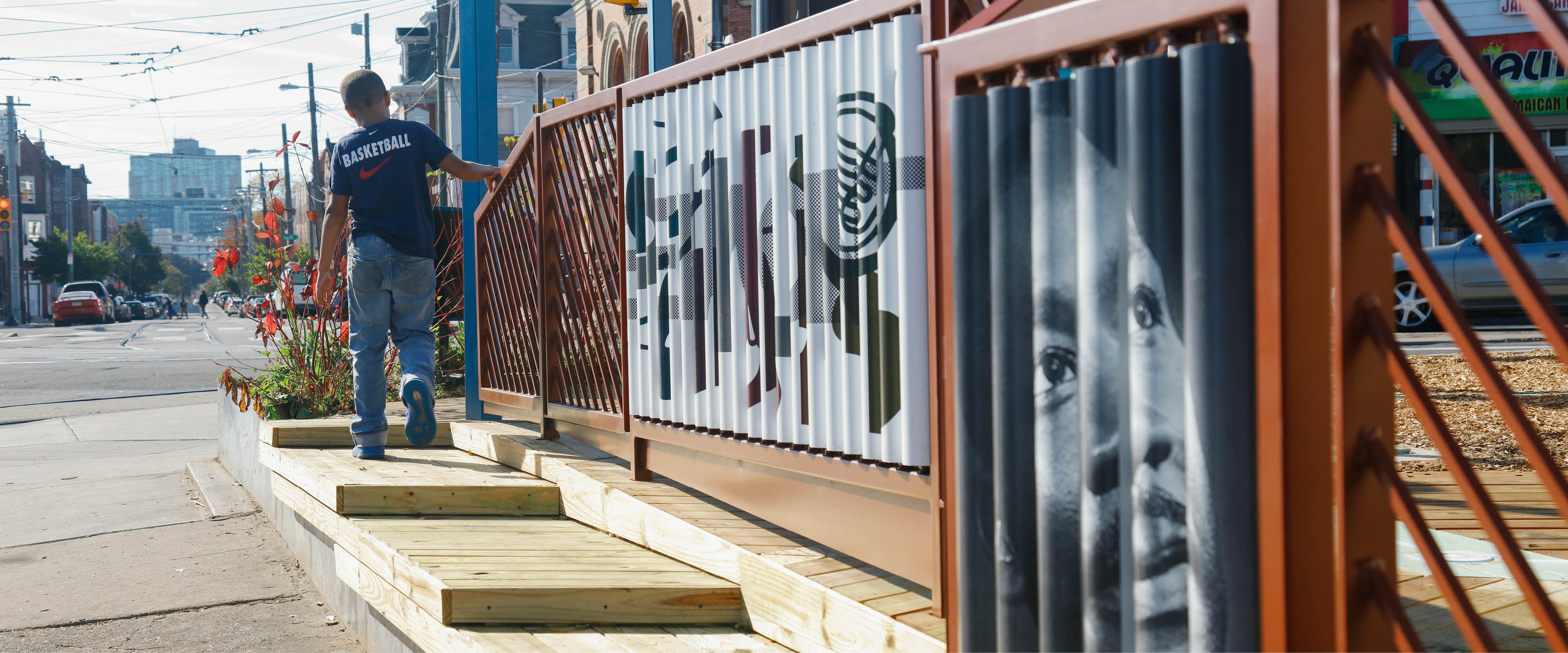
One of PLLAN’s current projects seeks to co-design playful learning installations for 11 homeless shelters across the city. The spaces will also provide multiple opportunities to bring the community of shelter staff, families, and service providers together to support healthy child development and learning and are based on the feedback from the families in each shelter. The spaces will also provide multiple opportunities to bring the community of shelter staff, families, and service providers together to support healthy child development and learning and are based on the feedback from the families in each shelter.
Community Engagement
Playful Learning Landscapes is successful when we ensure that kids, families, and community members in the neighborhood help co-design these playful learning designs and installations together.
Our community engagement approach is centered around a community engagement process that ensures that every activity and every installation is based on community values, community culture, and community wishes, hopes, and dreams for their children. This is something that we take very seriously as we start to think about creating playful learning activities and spaces that are meaningful and relative in a particular community.
Getting to work with community members and families throughout the city has been such a transformative experience for my own practice, as I am able to intersect my love for play, my passion of learning, and my dedication to communities and its uniqueness.
Similar to Finland, providing the community with opportunities to showcase what they like to do and what they find meaning in, increasing the chances of buy-in and engagement at a particular playful learning site over time. And, getting to work with community members and families throughout the city has been such a transformative experience for my own practice, as I am able to intersect my love for play, my passion of learning, and my dedication to communities and its uniqueness.
PLLAN’s evidence-based approach addresses inequity by creating joyful opportunities for children to learn while playing and by encouraging adult-child interaction. I have already seen such impressive findings throughout our city from projects we have implemented with the playful learning model and community-driven design.
We use this formula for creating Playful Learning Landscapes whenever we are designing the built environment or planning a playful learning programmatic activity to support high quality learning. Our formula combines how children learn (the qualities of learning), paired with what children learn (learning goals, skills, or content), and aligning those with the community’s hopes, values, and desires of what and how they like to play and interact with their children.
Through design, we are able to really ensure that everything we create is community-driven and co-designed with the community leading the design to completion. All of our community engagement sessions are playful and interactive to ensure that the final product, whether a playful learning installation or a playful learning environment is specifically designed for each community.
Coming from my own personal array of experiences and knowing how important it is for families around Philadelphia to have access to playful learning opportunities outside of school and in our neighborhoods, I am so proud and grateful to play a part of this playful learning movement in the city of Philadelphia.
Future Directions and Conclusion
Fulbright Finland has been so supportive throughout my playful learning endeavors even after I returned home to Philadelphia.
This past February, I got the opportunity to return to the place that catapulted my playful learning career forward: Helsinki, Finland. While in town, I was greeted by the Fulbright Finland office staff where we spoke about play in Philadelphia, PLLAN’s current projects, and the former playspace that led me to the work I now currently do.
Fulbright Finland has been so supportive throughout my playful learning endeavors even after I returned home to Philadelphia, so being reunited with the Fulbright staff and engaging in an afternoon kuksa, was full circle.
During this trip back, I was able to visit the PLC (Playful Learning Center) where Dr. Jonna Kangas was eagerly waiting to welcome me back in the room filled with discovery, curiosity, and fun.
We spoke about the upcoming research on playful learning in the Finnish curriculum, went over the outcomes of Just Play, and talked about the future of Philadelphia’s playful learning aspirations in both education and community design. I even got to attend a new playful learning exhibit called, “The Power of Play,” (“Leikin Voima”) where I engaged in countless games, interactive and high-tech experiences, and fun-filled, movement-focused activities that correlated with a learning goal (math, literacy, STEAM).
Not only was this an inspiring experience that made me so proud of Finland and its play-oriented outlook, but it also drove home the notion that play is an integral part of the success and overall happiness of both children and adults everywhere.
While playful learning may look different in Finland due to a myriad of social, economic, and educational frameworks, I was able to bring back best practices through my many observational experiences.
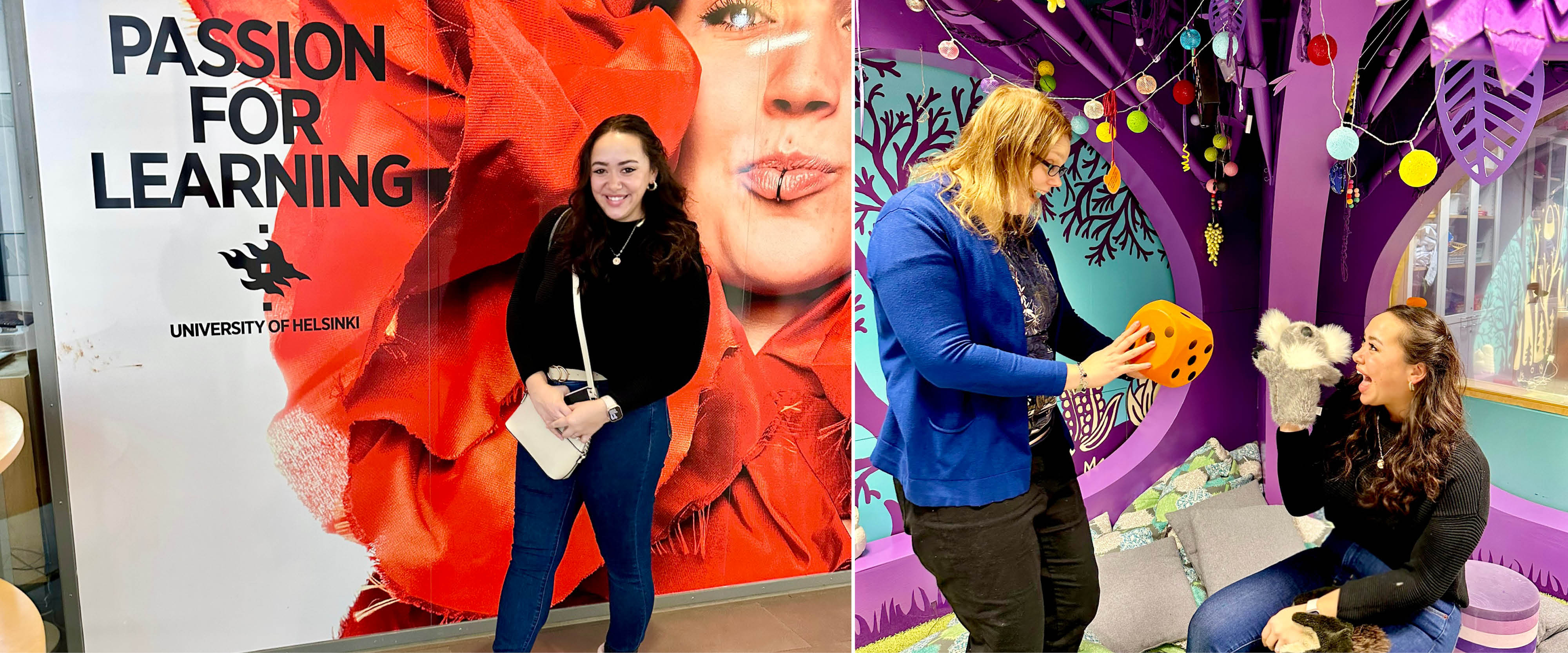
Without my Fulbright project, I would have never had the confidence to start Just Play, adapt and shift to a pandemic online classroom, and then reach new heights by bringing playful learning to neighborhoods all throughout Philly.
I am incredibly thankful for my time in Finland because it acted as my catalyst to continue to bring playful learning and high-quality learning opportunities for children and families in Philadelphia. But most of all, I am forever thankful to be a part of the Fulbright Finland Family who always believes in the Power of Play.
Read the whole Fulbright Finland News 2/2023!
